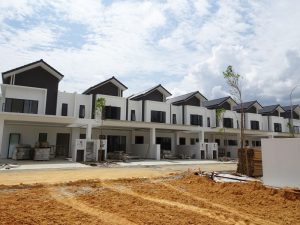Many families spend years paying rent without building any equity or wealth, dreaming of homeownership but believing it’s financially out of reach. The reality is that various financing options and affordable housing programs can make the transition from renting to owning more accessible than many families realize, often with monthly payments comparable to rent.
Affordable housing financing programs are specifically designed to help working families overcome the traditional barriers to homeownership, including high down payment requirements, strict credit standards, and limited savings for closing costs. These programs recognize that stable families deserve opportunities to build wealth through homeownership.
Understanding how financing opens doors to affordable housing helps families evaluate their options and take concrete steps toward homeownership that builds long-term financial security while providing stable housing for their children’s future.
It Reduces Down Payment Barriers
Traditional homeownership often requires substantial down payments that can take families years to accumulate while paying rent. Affordable housing financing programs offer low down payment options that make homeownership accessible without waiting years to save large amounts.
FHA loans require as little as down payment, making homeownership possible for families who have steady income but limited savings. These government-backed loans help bridge the gap between rental affordability and homeownership by reducing upfront cash requirements significantly.
VA loans for eligible veterans and service members offer zero down payment options, eliminating the biggest barrier to homeownership for military families. These programs recognize military service while providing pathways to homeownership that honor veterans’ contributions.
USDA rural development loans provide zero down payment financing for homes in eligible rural and suburban areas. These programs support homeownership in communities outside major metropolitan areas where affordable housing options may be more plentiful.
State and local down payment assistance programs offer grants or low-interest loans to help cover down payments and closing costs. These programs often combine with other financing options to make homeownership possible with minimal upfront investment.
Federal Low-Income Housing Tax Credits and State Low-Income Housing Tax Credits help developers create affordable housing opportunities that benefit qualifying families through reduced purchase prices or rental costs. These tax credit programs incentivize the construction and preservation of affordable housing units that make homeownership more accessible to working families.
It Provides Flexible Credit Requirements
Affordable housing financing programs from companies like Advantage Capital often feature more flexible credit requirements than conventional loans, recognizing that credit scores don’t always reflect a family’s ability to make consistent housing payments. These programs evaluate overall financial stability rather than focusing solely on credit scores.
Alternative credit evaluation considers rental payment history, utility payments, and other indicators of financial responsibility that may not appear on traditional credit reports. This comprehensive approach helps families with limited credit history qualify for homeownership opportunities.
Credit repair assistance programs help families improve their credit scores while working toward homeownership goals. These services provide education and support that addresses credit issues while preparing families for successful homeownership transitions.
Co-signer and guarantor options allow families to qualify for financing with help from relatives or other qualified individuals. These arrangements enable homeownership when individual credit or income doesn’t meet standard requirements but family support is available.
First-time homebuyer education programs often accompany flexible financing options, providing families with knowledge and skills needed for successful homeownership. These educational components help ensure long-term success and financial stability after purchasing homes.
It Offers Lower Interest Rates and Better Terms
Affordable housing financing programs often provide below-market interest rates that reduce monthly payments and total loan costs over time. These subsidized rates make homeownership more affordable than market-rate financing while building long-term wealth through equity accumulation.
Interest rate buy-down programs help families qualify for lower payments by reducing effective interest rates through government subsidies or developer contributions. These programs make monthly payments more manageable during early homeownership years.
Extended repayment terms and flexible payment structures accommodate families with varying income patterns or seasonal employment. These options provide payment flexibility that helps families maintain homeownership through temporary financial challenges.
Reduced closing costs through seller contributions, lender credits, or program benefits minimize upfront expenses that often prevent families from completing home purchases. Lower closing costs preserve family savings for moving expenses and home improvements.
Principal reduction programs and shared equity arrangements help families build wealth while reducing monthly payment burdens. These innovative financing structures make homeownership sustainable for families with moderate incomes.
It Builds Long-Term Financial Security
Homeownership through affordable financing creates forced savings through mortgage principal payments that build equity over time. Unlike rent payments that provide no ownership benefit, mortgage payments contribute to wealth building that benefits families for decades.
Property appreciation provides additional wealth building opportunities as home values increase over time. Families who purchase affordable homes often see significant equity gains that create financial security and opportunities for future property upgrades.
Tax benefits including mortgage interest deductions and property tax deductions reduce the effective cost of homeownership while providing additional financial advantages unavailable to renters. These tax savings can offset monthly payment differences between renting and owning.
Inheritance opportunities allow families to pass property wealth to children, creating generational wealth that breaks cycles of rental dependency. Homeownership provides families with assets that can support future generations’ financial security and homeownership opportunities.
It Provides Housing Stability and Community Benefits
Fixed housing payments through homeownership protect families from rental increases and displacement that can disrupt children’s education and family stability. Predictable housing costs enable better long-term financial planning and family security.
Community investment incentives encourage families to improve properties and neighborhoods when they have ownership stakes. This investment creates stronger communities while building personal wealth through property improvements and maintenance.
School district stability allows children to remain in the same schools throughout their education, providing continuity that supports academic achievement and social development. Homeownership eliminates disruptions caused by rental housing changes.
Pride of ownership motivates families to maintain and improve properties while building stronger connections to their communities. This emotional investment creates positive cycles that benefit both families and neighborhoods.
Making Homeownership Reality
Affordable housing financing transforms the dream of homeownership into achievable goals for working families who previously thought homeownership was beyond their reach. The combination of reduced down payments, flexible credit requirements, favorable terms, wealth building opportunities, and housing stability creates pathways from renting to owning.
When financing programs remove traditional barriers while providing education and support, families can successfully transition to homeownership that builds long-term financial security while providing stable housing for future generations.







